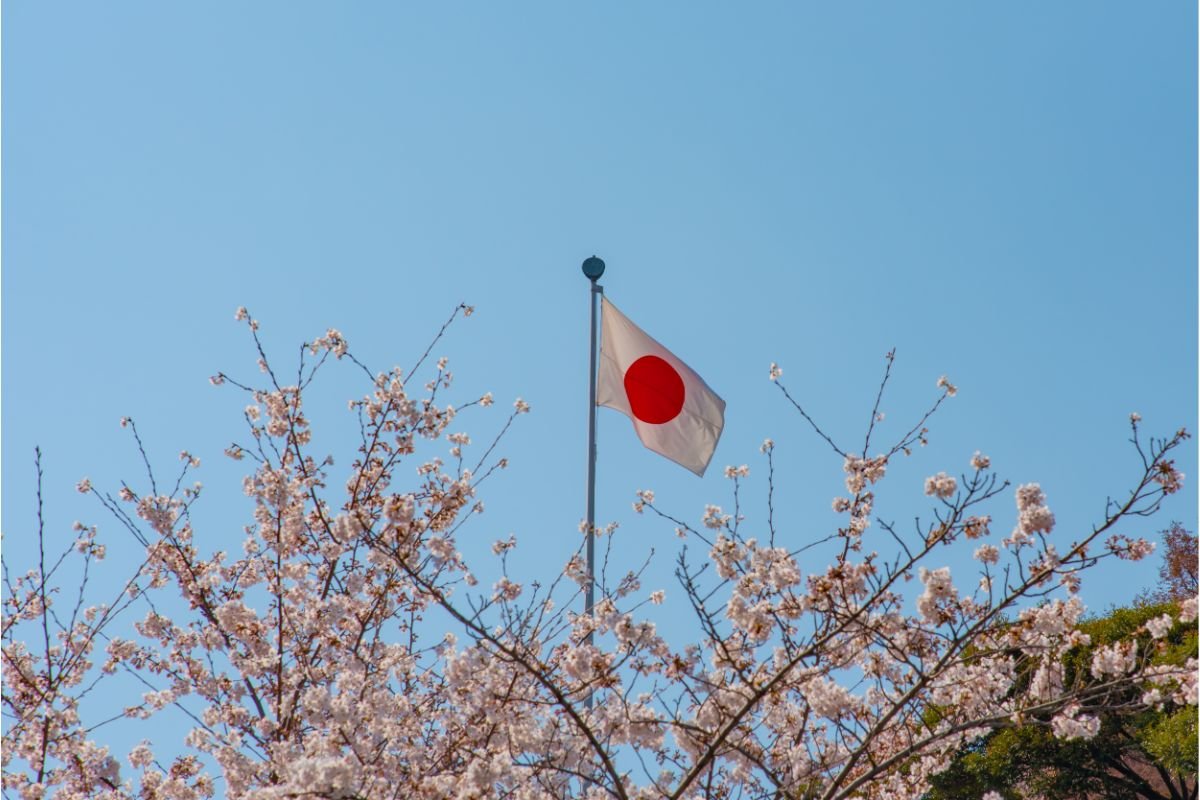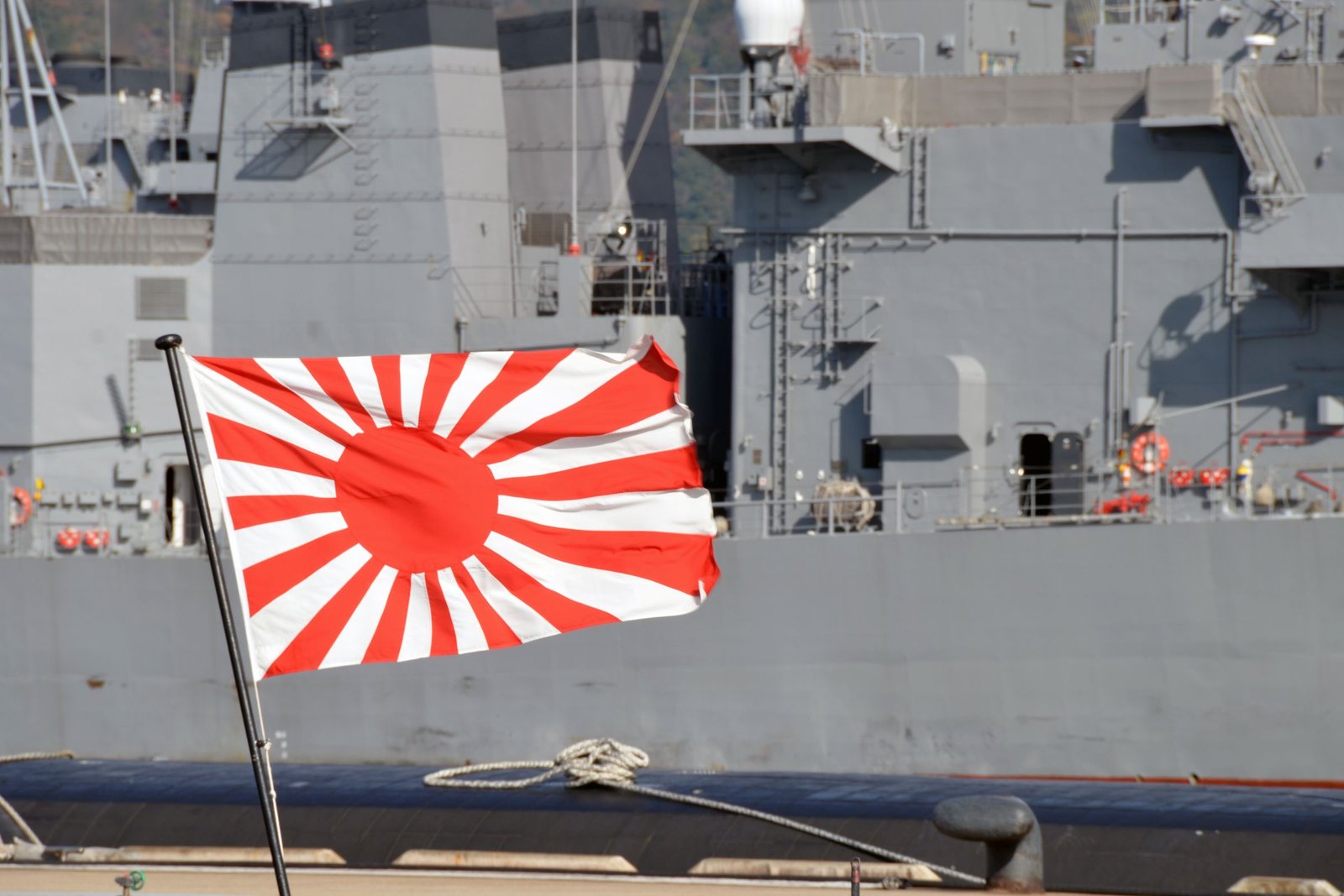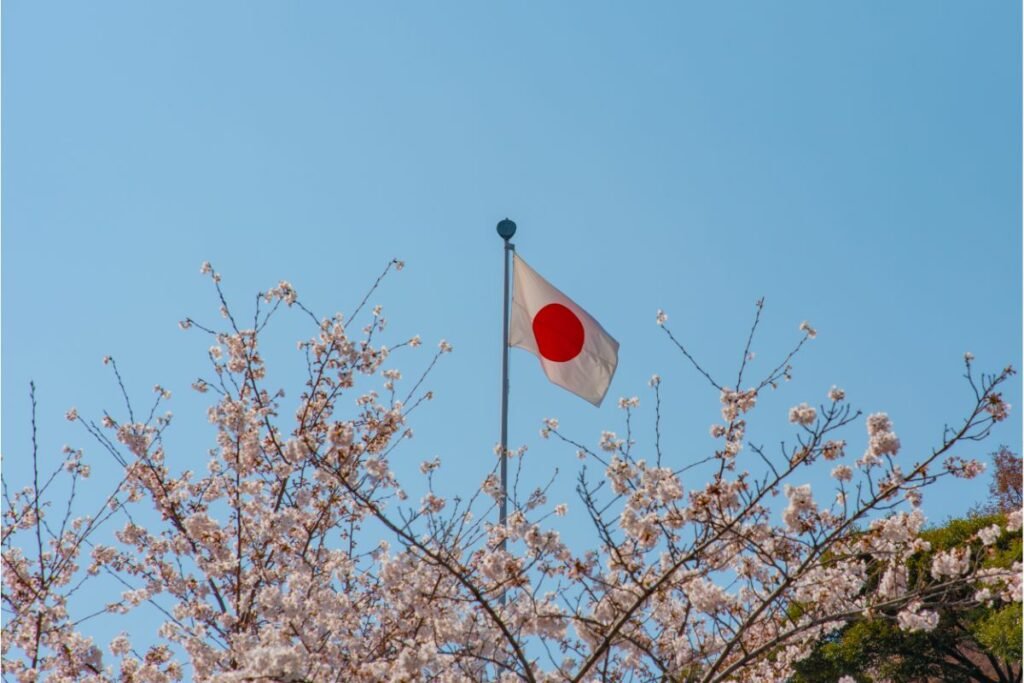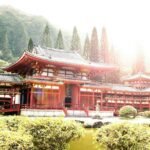Of all the tourist destinations in the world, there are few that have the same level of allure, mystique, and attraction that Japan does – with countless people from all over the world journeying there for vacation, for business, or to embrace the culture that has become a global phenomenon.

However, while many are familiar with various aspects of the food and culture, there are still many things pertaining to their history and society that still elude us – with one example being their flag, a famous symbol for many, but one whose meaning is not commonly known.
But what exactly does the Japanese flag mean, and what significance does it have?
What Is The Japanese Flag?
Known as the Hinomaru, and officially known as the Nisshoki, or ‘flag of the sun’, the Japanese flag was designed to perfectly embody the country’s nickname: the Land of the Rising Sun.
This consists of a rectangular white banner, with a solid red circle located in the center.
Following the passing of the ‘Act On National Flag and Anthem’ in 1999, the flag became the national flag for the entire country of Japan, although it had already been in place in a de facto position since its introduction in 1870.
The History Of The Japanese Flag
Prior to 1870, there was no unified national flag for the country of Japan – instead possessing numerous flags representing specific noble houses, or prefectures around the country.
While the image of the Hinomaru carried significance all throughout ancient Japan, and was depicted in various imagery and painting from as far back as the 7th century AD, it did not hold the significance as a national flag until 1870, when proclamations from the Daijo-Kan (governmental body from the Meiji period) issued legislation announcing the adoption of a national flag.
It initially became an important flag for the merchant and military navies of Japan, before eventually gaining in significance over the ensuing years.
What Is The Meaning Of The ‘Rising Sun’?
Within Japanese culture, the image of the rising sun has long held importance – both as the ‘flag of the Rising Sun’, and later with the Hinomaru.
The name of ‘The Land of the Rising Sun’ has long been associated with Japan due to the association with the country being the first nation that the sun rises over at the break of day.
This of course is not technically true, but the notion of the sun rising in the east is a historical one, and has been used all across the world throughout history.
With this image of the rising sun comes associations with fresh starts, new eras, renewed strength, and the idea of presenting yourself to the world.
As such, this was in many ways the perfect symbol for Japan at this time, when it was beginning to stop being a feudal system of prefectures, and become a unified nation under one government.
The image of the sun is also prominent within Japan, as the Emperor of the country is believed to be the descendant of the shinto sun goddess, Amaterasu, which for centuries secured a family’s rule, due to the notion of divine selection.
What Are The Customs For Using The Flag?
How the flag itself can be flown, hung, and used has always been something of a controversial issue within Japan, and there have been various rulings and legislations since its introduction that dictate how and where it can be displayed.
Initially, it was a requirement for citizens to greet the Emperor with the flag when they met him – something that proved unpopular for many people who were less in favor of the unified Japan. Because of this, acceptance of the flag took some time amongst the people.
Prior to the Second World War, it was law for all homes to display the flag on public holidays – however, the use was limited during the war, especially during occupation from the allies, and this led to the flag being more reserved for buildings of national and governmental importance.
Since then, it has been a personal choice when it comes to whether to fly the flag on holidays or not, although government buildings continue to do so on public holidays, and throughout the year.

What Is The ‘Rising Sun’ Flag?
Another commonly used version of the Japanese flag is the rising sun flag, which includes the same red sun on a white background, albeit with the addition of several beams of red light coming from the center.
This was more widely used before WW2 – as well as during – and is seen as a strong image of Japanese Imperialism, and a reminder of that divisive period within Japan’s history.
How Is It Perceived?
Public perception of the flag amongst Japanese people remains divisive and controversial to this day.
The adoption and popularization of the flag by right wing groups and politicians within the country – and an association with nationalism – has meant that many people refuse to fly the flag on their homes or businesses, and have specific reservations about its status as the national flag.
With links to Japanese imperialism, the flag is rejected entirely by the Japanese Communist Party, and many left leaning citizens have distinct vocal reservations against it.
The Rising Sun Flag & South Korea
However, one of the main sources of criticism – and one that has been the loudest detractor of the use of the flag in recent years – has been the South Korean government, who resent the use of the flag due to its association with the horrors they faced during Japan’s violent expansion during the war.
Comparing the flag to the swastika flag used by the Nazi party during the Second World War, the South Korean government has raised their concerns about its present link to Japanese nationalism, as well the use of the flag at global sporting events, and in advertisements – stating how it dishonors those who were killed, and glosses over a dark period of their history.
However, the flag is still flown at sporting events, and appears around the world in advertising and media.
Final Thoughts
And there we have it, everything you need to know about the Japanese flag, and what significance the design and history behind it has.
It is certainly true that Japan is a popular country, and one that is alluring and attractive for many different people around the world.
What’s more, the country has also never been more accessible and affordable, meaning more and more people from further afield can come and experience the country first hand.
So if you are headed to Japan, and want to learn more about history and culture, then be sure to check out this handy, informative guide!
Frequently Asked Questions
Now that we know a little more about Japan, and what the design of the flag actually means to the history of the country, it is now time to answer some frequently asked questions that you might be interested in.
What Is The Mourning Protocol For The Flag?
There are at least two mourning protocols for the Japanese flag, and depend entirely on the situation. One protocol is to fly it at half mast, while the other common one is to wrap the spherical finial atop the pole with black material, with a tail flying above the flag itself.
Did Japan Have A Flag Prior To 1870?
Prior to 1870, Japan did not have a unified flag for the entire country as a whole – instead having specific flags for prefectures (regions), and specific royal households and landowners throughout the country – as well as the ‘Flag of the Rising Sun’, which was used by Feudal warlords.
- What Is a Maiko? - July 13, 2025
- What Does Domo Arigato Mean? - July 12, 2025
- What Does Naruto Mean? - July 12, 2025









